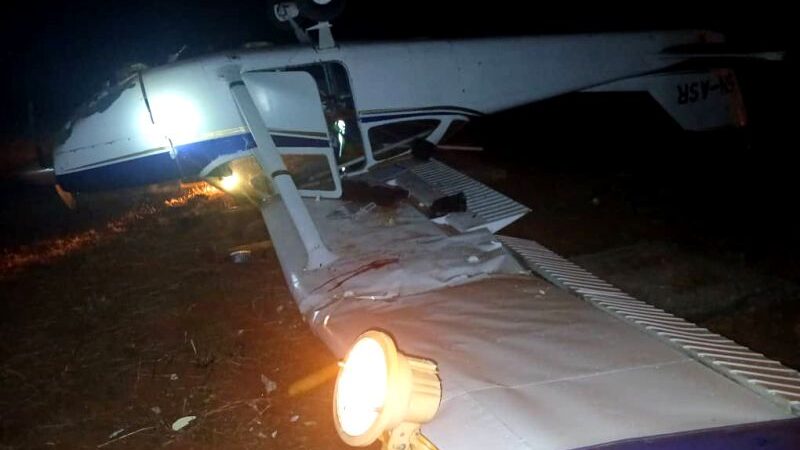NAAE Says ILS Absence Not To Blame For Ibadan Private Jet Crash Landing
The National Association of Air Traffic Engineers (NAAE) has described as false and misleading that obsolete navigational aids and absence of an Instrument Landing System (ILS) at Ibadan airport was responsible for the crash landing of the private jet conveying a Minister to the airport
According to a statement signed by the National President of NAAE, Engr Selzing Miri, airports are broadly classified according to available equipment at the airport. “Airports are classified as Instrument Flight Rules (IFR) if they have ILS, VOR, DME or any other ground-based navigational aids installed, or classified as Visual Flight Rules (VFR) where pilots operate only by visual cues for takeoff and landing operations.”
According to Miri, VFR airports are designed for operations in good weather conditions where pilots can navigate using visual references saying it is essential to clarify that Ibadan Airport is a Visual Flight Rules (VFR) airport and does not depend on ILS or VOR or any other ground-based navigational aids for takeoff and landing.
“Therefore, the crash of this aircraft at Ibadan Airport cannot be linked to the absence or presence of any navigational equipment.
In another report, it was claimed that the ILS was not calibrated. This is also misleading because you can only calibrate what exists and not what does not exist.”
Miri stated that the preliminary report from the Nigerian Safety Investigation Bureau (NSIB) mentioned that the incident occurred along runway 22 and involved the aircraft with registration number 5N-AMM, stressing that the report highlights that the control tower lost communication with the aircraft after landing, prompting the timely response of airport emergency services and relevant authorities.
“Contrary to the initial speculation regarding the cause of the crash, the NSIB report does not attribute the incident to the absence of an ILS. Instead, it emphasizes that the aircraft skidded off the runway into a nearby bush. The quick response of the airport’s Aviation Security (AVSEC), Aircraft Rescue and Fire Fighting Services (ARFFS), and other officials ensured the prompt and successful rescue of all passengers and crew members.”
Miri noted that while it is acknowledged that having modern Communication, Navigation, and Surveillance (CNS) facilities, including an ILS, could enhance the overall safety and efficiency of an airport, it is crucial to recognize that accidents can result from a combination of factors.
He said a thorough investigation is necessary to determine the root cause accurately adding that blaming the absence of an ILS at a VFR airport oversimplifies the complexities involved in aviation incidents.
“The focus should be on a comprehensive analysis of all contributing factors, including weather conditions, pilot actions, and the condition of the aircraft.”
He opined that while concerns about air navigation equipment and airport facilities are valid, attributing the recent incident at Ibadan Airport solely to the absence of an ILS may not accurately reflect the circumstances adding that careful and unbiased investigation is crucial to understanding the complete picture and implementing measures to enhance safety in the aviation sector.
“The ongoing efforts to modernize Communications, Navigation, and Surveillance (CNS)/Air Traffic Management (ATM) facilities and the training and retraining of the officers that manned these facilities should be encouraged for the overall improvement of aviation infrastructure in Nigeria.”






